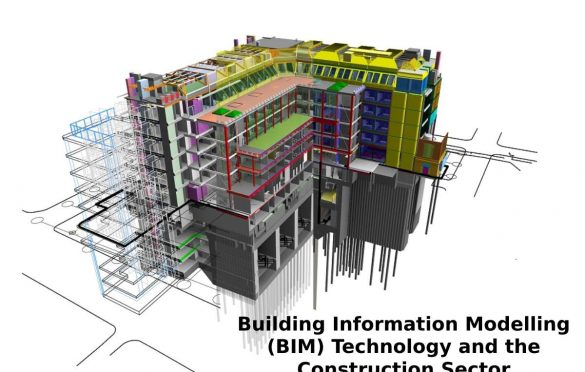
Building Information Modelling (BIM) Technology and the Construction Sector
Construction projects are a complex process that involve the input and cooperation of many individuals with various skills, such as architects, engineers, contractors, tradesmen, construction workers, and business professionals, among others. All these individuals must work together to ensure the timely success of any construction project.
This is where building information modelling (BIM) intelligent software comes into play, enabling them to better collaborate on:
- Structure design
- Construction
- Operation
The BIM prevents incompatible plans from developing if these various workers were to act independently from each other, and then later get together to discover that they are at odds with each other. Commercial building projects are particularly complex and so collaborative teamwork is essential for the smooth operation of the project.
If issues are discovered after the construction has already started, it can result in a financial cost for “change orders.” This is a document that outlines any changes to the project that differ from the originally agreed upon plan. Change orders are just one of the various documentation available that records adjustments made during the construction process.
The salient advantage of BIM intelligent software is the ability to provide real-time collaboration for all parties involved in the project, resulting in better outcomes for cost and efficiency, and the streamlining of the whole process. The overall usefulness of this technology has led to BIM being one of the fastest growing trends in the construction industry, as the sector continues to leverage technological innovation to reduce costs and save time and resources.
Building Information Modelling in Construction
Much more than just a drawing, the intelligent BIM software creates a comprehensive and realistic model of the relevant building which incorporates all the building’s information and properties used in popular developments such as JQ Rise, Birmingham. Anything that someone wants to find out about the building is available at the touch of a button.
To illustrate how this may be utilised. If, say, an architect wanted to change an aspect of the design slightly, and the BIM software then flagged this as a structural issue, a project engineer could work to rectify this change by working on a different view of the same model.
The BIM software allows for multiple views of the same building simultaneously, all done in real time, and this allows for all those involved in the project to be fully updated and aware of how things are progressing. Deciding to add larger windows to the building would mean, as an example, more light getting in, and this would also mean necessary changes in the heating ventilation and air conditioning (HVAC) for increased cooling capacity. More light coming in would result in more heat energy coming in.
The Main Advantages of BIM
Potential problems can be identified before construction commences. Early detection of incompatible designs can prevent expensive alterations once construction has started.
Optimised scheduling can be used, resulting in the project elements being better coordinated.
Intelligent modelling can identify opportunities for automation within the construction phase. If certain jobs could be automated, that would save time and would also free up workers and resources to focus on other aspects of construction.
Worker safety can also be improved from BIM intelligent software by giving access to workers all the information they will need pertaining to their task. With greater situational awareness, onsite workers can better manage risks and potential hazards.
Another significant advantage of BIM software is the ability to control the entire working process in a timely manner by providing automatic workflows. Any changes that are made will automatically apprise every one of these changes and make automatic updates to the process for everyone.

